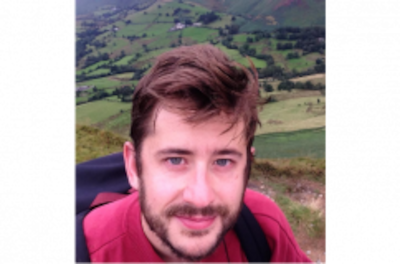Long before Ireland became the multicultural melting pot of today, poet Ferdinand Levy was one of the few black men living here.
Levy was born in Jamaica on October 19th, 1904. He came to Britain in 1932 with a view to becoming a doctor, but settled on studying medicine at Trinity College Dublin (TCD).
He had a relatively financially comfortable background. In the late 1920s, he lived in New York where he was involved in the cultural flowering of the Harlem Renaissance, which was an explosion black culture which extended from the United States to the Caribbean in the 1930s.
The scene was focused on Alexander Gumby’s book studio in Harlem, which attracted the most prominent African-American and Caribbean writers. Levy also contributed to Gumby’s Book Studio Quarterly, an ill-fated magazine from around late 1930 which failed to continue due to the financial precarity of the studio after the Wall Street Crash.
From Baby Reindeer and The Traitors to Bodkin and The 2 Johnnies Late Night Lock In: The best and worst television of 2024
100 Years of Solitude review: A woozy, feverish watch to be savoured in bite-sized portions
How your mini travel shampoo is costing your pocket and the planet - here’s an alternative
Black poets and intellectuals of the Harlem Renaissance sometimes looked to the Irish Literary Revival and Irish revolutionary politics for inspiration. Most of the countries in the Caribbean were still under British rule at the time.
Levy was a mature student, aged 28, when he embarked upon his medical studies at Trinity and went on to spend the next two decades in Dublin.
He was a memorable individual, described by his friend John Harold Douglas, a Quaker who went on to become a taoiseach’s nominee for the Seanad in 1954, as a “trim, immaculate figure with a long, thin cigarette holder” and an “‘inveterate first nighter… quite a character in cosmopolitan Dublin”.
During the 1930s, Levy was the president of the Association of Students of African Descent (ASAD) in Dublin. Most of them were medical students from well-connected families and they included future Nigerian statesman and jurist Jaja Wachuku, and New York ear, nose and throat specialist and McArdle prize-winning surgeon, the Trinidadian Errol A Thompson.

As president of the association, Levy hosted singer and activist Paul Robeson in his Baggot Street flat during Robeson’s 1935 visit to Ireland. Robeson was at the height of his fame at the time as a singer and an international movie star.
ASAD held meetings in the Quaker Friends’ Meeting House on Eustace Street, with talks on racial justice, the expropriation of land in Kenya by white settlers, broadcasts delivered via Radio Éireann, and dinners.
[ F.B. Eyes: 50 years of policing African American literatureOpens in new window ]
In the 1930s, Levy recited poems at social events, including a gathering of foreign students at the home of Douglas. Through the Douglas family, Levy came to know Æ (the poet and painter George Russell), visiting his Rathgar home and corresponding with him on poetry.
He cofounded the Dublin Gramophone Society and had an extraordinarily large collection of the records for the time from Beethoven to spirituals and Irish folk songs.
The Irish Times columnist Quidnunc noted at that the time that Levy’s “collection of records became recognised as one of the best in the country and was considered second only to the collection of Mr Harold Douglas, except in its folk music range...”

He was an art collector of major Irish painters, including Mainie Jellett, Paul Henry and Louis le Brocquy. Le Brocquy painted Levy’s portrait in 1939.
He was quite outspoken in Irish society at the time.
In 1940, Levy delivered a paper, “The Irish Theatre as Seen by a Foreigner”, to the Philosophical Society in TCD.
In it, he decried racist caricatures on stage: “[foreigners] did not go to the theatre to be complimented, but they did not go there to be insulted”. However, he praised the “hospitality, the kindness, the good manners, and the capacity for enjoyment of the Irish people”.
The reactionary former government minister Ernest Blythe, who was then the director of the Abbey Theatre, responded to Levy’s comments in dismissive terms.
“It was not the business of Irish dramatists to present only a picture of Irish life that would give a good impression to foreigners,” he stated.
[ ‘Black Americans and Irish have a lot in common. I feel we’re connected’Opens in new window ]
Levy began to write poetry and his first and only collection, Flashes from the Dark, was published in 1941 by Colm O’Lochlainn’s Three Candles Press.
Music is central to Flashes from the Dark, both in its belated workings of Harlem Renaissance jazz and blues rhythms, and subject matter, Harlem Cabaret and On First Hearing Stravinsky being some of the poems that concern music.
The collection garnered some very good reviews and was championed by the likes of Austin Clarke, but has been neglected since.
In one of his poems, Down O’Connell Street, he recalls passing a woman dressed from head to toe in green and the brief frisson of desire that passed between them:
Down O’Connell Street.
The smile she smiled
Was indiscreet ...
I’d make her know
That tropic love is sweet Lord,
No!—Not down O’Connell Street.
In the monocultural Ireland at the time, Levy cut something of a dash, according to Maynooth academic Dr Karl O’Hanlon, who has been studying his work for many years.
He would regularly appear in the social pages of many of the daily newspapers.
Levy was well received in polite Dublin society, but still encountered racism.
He wrote regularly to a friend in New York about his time in Ireland as a person of colour in what was then an almost completely white society.

In a long letter, he stated: “Generally speaking you can sum up the stares in three ways; for the girls, admiration for sexual tryouts, for a child you are a curiosity, for the men, a feeling of fear and resentment that their women will become too intimate with you.”
The dedication in his book of poems describes his Dublin years as “a most delightful episode”.
Dr O’Hanlon says there is much about contemporary Irish society that Levy can teach us. His poems are about anti-colonialism and pan-African solidarity, but there are also travel poems and old-fashioned sonnets.
[ Golden decade: How Irish writing roared in the 1920sOpens in new window ]
He writes in a Harlem Renaissance style with an idiom that was unique in 1940s Ireland.
“As a poet, Levy helps us rethink our sense of Ireland’s relationship to immigration: we tend to place greater emphasis on outward migration, with inward migration a recent phenomenon... but migrant populations have been a part of Ireland’s history for longer than we might think,” Dr O’Hanlon says.
“With that comes fascinating perspectives on global anticolonial solidarities, questions of cosmopolitanism versus nationalism, and perennial struggles against racism and discrimination.”
Levy is now the subject of a BBC Radio 4 documentary entitled A Jamaican Poet in Dublin, which was first broadcast on St Patrick’s Day and is available on the BBC website.
It is narrated by Jamaican poet Jason Allen-Paisant who is a senior lecturer in critical theory and creative writing at the University of Manchester.
Levy eventually became a medical officer of health for the parish of St James, Montego Bay in Jamaica, where he died in 1972.











